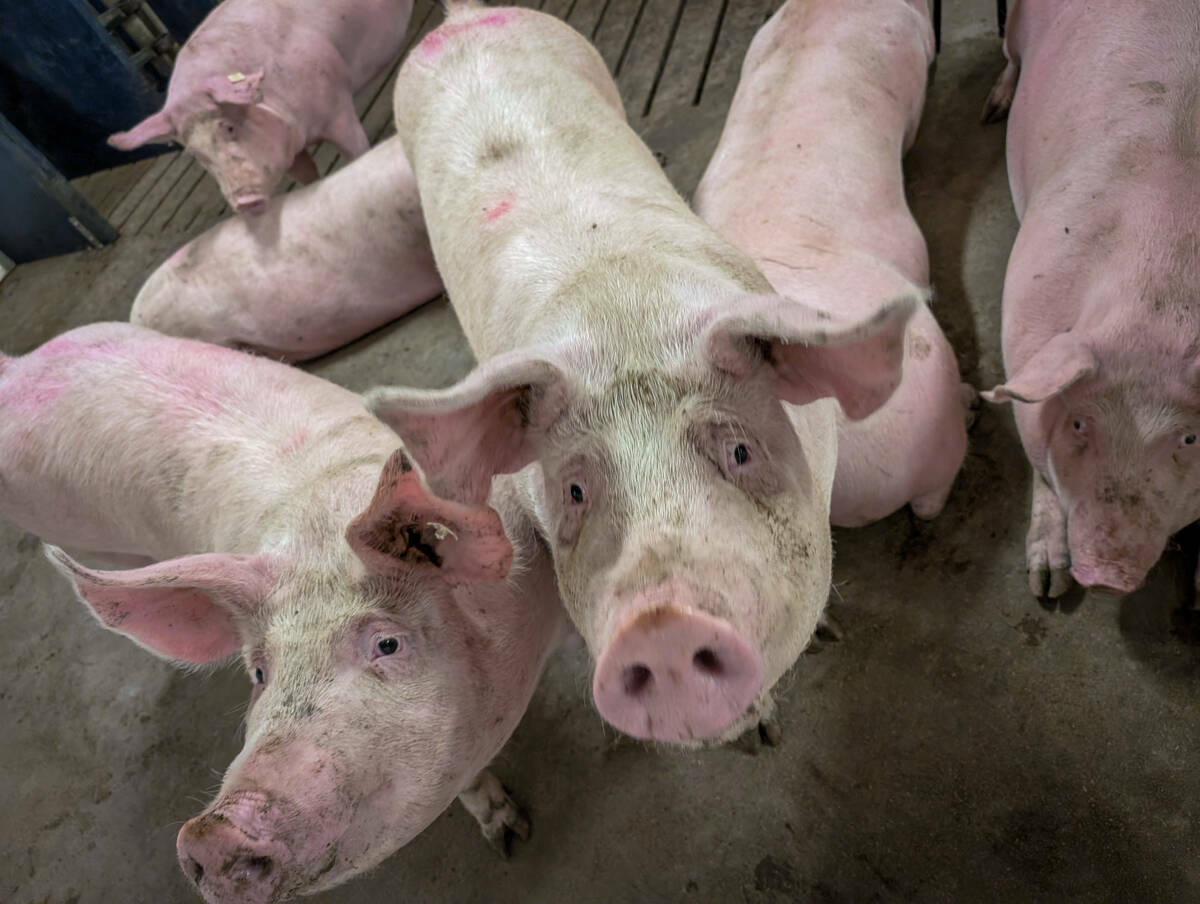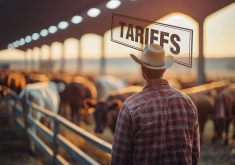Alberta cattle producers are enjoying unexpectedly strong pricing this spring with both fed cattle and calf prices in Alberta rallying almost 50 per cent since last fall’s painful lows.

“There’s always going to be someone who says they saw it coming. We didn’t,” said Brian Perillat, manager and senior analyst with CanFax, the Canadian Cattlemen’s Association’s market analysis division.
“After the price correction we saw last year, you always expect a bit of a bounce. But we didn’t expect such a large price increase through the winter given how tough 2016, especially the fall, was.”
Fed cattle prices bottomed out at $128/cwt last fall. Barely nine months later, they reached $191/cwt. The prices seen last month were the highest since mid-2015 and only about $12/cwt off the all-time highs set two years ago.
Calf prices for 550-pound steers made a big jump as well, rising from $168/cwt last fall to about $250/cwt ($2.50/pound). These prices are the highest since early 2016, though still about $80 below 2015’s record high of $330/cwt.
Read Also

Ottawa pauses update on food from cloned livestock
Health Canada has indefinitely suspended a proposed update to the novel food policy governing foods derived from cloned cattle and swine, as well as their progeny.
High cattle prices in 2015 slowed both exports and domestic demand, and as prices cooled, producers held on to cattle. The spring and early-summer holdback in 2016 translated to more supply than demand and larger-than-average carcasses by early fall. Carcasses reached near-record sizes by October, with average weights topping out at 936 pounds (almost 100 pounds heavier than today’s average weight of 839 pounds).
But as prices dropped through last fall, export and domestic market demand rebounded.
“The lower prices meant consumer demand increased,” said Perillat. “Retailers saw good margins so there was more featuring of beef in sales fliers. Add in the fact that fed cattle supplies weren’t quite as abundant as we’d expected and, quite before we knew it, we’d worked our way through the glut of supply.”
Unexpected Alberta bonus
As quickly as prices had dropped, they suddenly began to rise again. Typically, Canadian prices are discounted compared to the price-setting lead of the U.S., and Albertan prices generally equal or lag behind Ontario prices.
Not so this spring.
“At the end of 2016 and into 2017, our prices were actually at a premium to the U.S. A couple of months back, Alberta had the highest cattle prices in North America,” said Perillat. “It’s supply and demand. Canada hasn’t seen the herd growth that the U.S. has, so we didn’t have big supplies. Packers in Alberta had to pull hard on supplies to meet demand so our prices jumped.”
What happens next is anyone’s guess.
Consumer demand for beef, particularly for higher-value cuts, peaks during barbecuing season in spring/early summer. The seasonality of demand is likely to depress prices somewhat as we move towards fall. As well, exports appear to be softening somewhat due to the strong pricing.
So far, Trump’s threatened changes to the North American Free Trade Agreement (NAFTA) are helping Canadian beef by softening the Canadian dollar. Over the medium to longer term, however, retooling of NAFTA may throw a curve ball into Canadian beef’s pricing.
“There’s strong consensus across North American cattle organizations that NAFTA is good for all of us,” said Perillat. “Any talk about renegotiating or scrapping NAFTA is a concern but hopefully the cattle industry will be heard.”
Regardless of what happens politically, expect increased uncertainty, faster change, and unusually varied pricing ahead.
“The way society, individuals and markets absorb, transfer and exchange information about supply and demand, whether globally or domestically, is very different than it used to be,” said Perillat. “Markets move rapidly because everyone reacts at the same time now.”
That’s certainly been the case the last two years, he added.
“The recent market ups and downs have been absolutely extreme. We have feedlots that in 2014-15 were making $500 or $600 a head. Six months later, they were losing $500 a head. Then six or eight months later they were making $700 a head.
“It’s tough. Risk management starts getting really important when markets bounce like that,” said Perillat.
Prices will likely average out over the long run, but in the meantime expect “big and stressful swings in the market,” he said.















